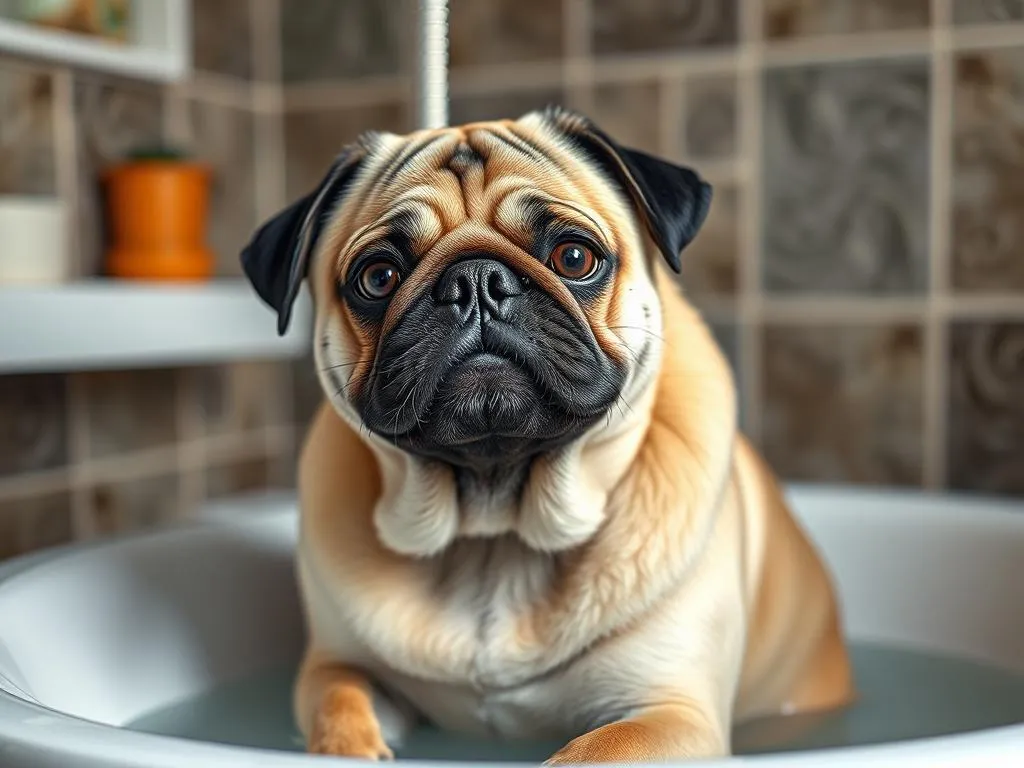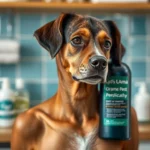
Taking care of your pug’s health is an essential aspect of responsible pet ownership. Pugs, with their charming personalities and unique physical traits, require special attention to grooming, particularly when it comes to bathing. The main question that arises for many pug owners is: how often should you bathe your pug? Understanding the right bathing frequency is crucial for your pug’s health and hygiene, as improper bathing can lead to various skin problems and discomfort.
Understanding Pugs
Breed Characteristics
Pugs are a small breed known for their distinctive wrinkled faces, curled tails, and stocky bodies. They typically weigh between 14 to 18 pounds and stand about 10 to 14 inches tall. Their coat is short, smooth, and comes in various colors, including fawn, black, and silver. While pugs are generally healthy dogs, they can be prone to specific health issues such as skin conditions, allergies, and respiratory problems due to their brachycephalic (short-nosed) structure. Recognizing these traits can help owners understand their pug’s grooming needs better.
Grooming Needs
Beyond their adorable looks, pugs have specific grooming requirements. Their short, dense coat requires regular brushing to remove loose hair and dirt. Though pugs do not shed excessively, they benefit from a good brush at least once a week to keep their coat healthy. Additionally, pugs have skin folds that can trap moisture and debris, making it essential to keep these areas clean and dry. Regular grooming is vital in preventing skin issues, so bathing is just one part of the overall grooming routine.
The Importance of Bathing
Benefits of Regular Bathing
Bathing your pug is not just about keeping them smelling fresh; it has several important benefits:
- Skin Health and Hygiene: Regular baths help remove dirt, oil, and allergens that can accumulate on your pug’s skin, promoting better skin health.
- Odor Control: Pugs can develop a distinctive odor, especially if they are active or spend time outdoors. Bathing helps eliminate these odors.
- Prevention of Skin Infections: A clean coat reduces the risk of skin infections caused by bacteria and fungi, which can thrive on dirty skin.
Risks of Over-Bathing
While bathing your pug is important, over-bathing can lead to several issues:
- Dry Skin and Irritation: Frequent bathing can strip the natural oils from your pug’s skin, leading to dryness and irritation.
- Disruption of Natural Oils: Pugs produce natural oils that help protect their skin. Over-bathing can disrupt this balance, resulting in unhealthy skin.
- Potential for Allergies and Skin Conditions: Excessive bathing can also lead to skin sensitivity and increase the likelihood of developing allergies or other skin conditions.
How Often Should You Bathe Your Pug?
General Guidelines
So, how often should you bathe your pug? Generally, it is recommended to bathe your pug every 4 to 6 weeks. However, this can vary depending on your pug’s lifestyle, coat condition, and personal habits. For example, if your pug enjoys outdoor activities or has skin issues, you may need to adjust the bathing frequency accordingly.
Signs That Your Pug Needs a Bath
It’s essential to pay attention to your pug’s cues regarding bathing. Here are some signs that may indicate your pug needs a bath:
- Visual Cues: If you notice dirt, grease, or an accumulation of debris in your pug’s coat, it’s time for a bath.
- Odor: A noticeable smell can signify that your pug needs cleaning.
- Behavioral Signs: If your pug is scratching more than usual or rolling in dirt, these behaviors may indicate discomfort or a need for a bath.
Best Practices for Bathing Your Pug
Preparing for the Bath
Before you start bathing your pug, it’s essential to prepare adequately:
- Gathering Necessary Supplies: Make sure you have dog-specific shampoo, towels, a brush, and possibly a non-slip mat for the bathing area.
- Setting Up the Bathing Area: Choose a comfortable and safe location, such as a bathtub or a shower. Ensure the area is free from distractions and has everything you need within reach.
Bathing Steps
Here’s a step-by-step guide on how to bathe your pug effectively:
- Brush Your Pug: Start by brushing your pug to remove loose hair and dirt. This step will also help prevent matting during the bath.
- Wet Your Pug: Using lukewarm water, wet your pug’s coat thoroughly. Avoid getting water directly in their ears and eyes.
- Apply Shampoo: Use a small amount of dog shampoo, lathering it gently into your pug’s coat. Ensure that you reach the areas between folds and around the tail.
- Rinse Thoroughly: Rinse your pug well, ensuring that all shampoo is removed. Leftover shampoo can irritate your pug’s skin.
- Dry Your Pug: Use a towel to dry your pug, patting instead of rubbing to prevent irritation. If your pug tolerates it, a blow dryer set to low can help, but make sure to keep it at a safe distance.
Post-Bathing Care
After bathing, your pug may need some extra care:
- Drying Techniques and Tools: Use absorbent towels to dry your pug and consider using a dog dryer for a quick finish. Ensure they are comfortable and warm during the process.
- Recommended Products for Skin and Coat Care: After drying, consider applying a conditioner or coat spray specifically designed for dogs. These products can help maintain moisture and shine.
Alternative Grooming Techniques
Dry Shampoo and Wipes
For in-between baths, dry shampoo can be a convenient option:
- Benefits of Using Dry Shampoo: This can help freshen your pug’s coat without the need for a full bath. It’s especially useful if your pug gets dirty quickly.
- Recommendations for Safe and Effective Products: Look for dog-specific dry shampoos that are free from harsh chemicals. Always do a patch test first to ensure your pug’s skin doesn’t react.
Professional Grooming Services
Sometimes, you may want to consider professional grooming:
- When to Consider Professional Grooming: If your pug has specific grooming needs or if you’re unsure about bathing techniques, a professional groomer can be a great resource.
- What to Expect from a Groomer Specializing in Pugs: Groomers familiar with the breed will understand their unique needs, including skin folds and coat type, ensuring your pug gets the best care.
Additional Health Care Tips for Pugs
Regular Veterinary Check-ups
Routine vet visits are crucial for monitoring your pug’s health:
- Importance of Routine Health Checks: Regular check-ups help catch potential health issues before they become serious.
- Common Pug Health Issues to Monitor: Be vigilant about respiratory problems, skin conditions, and weight management, as these are common in pugs.
Diet and Nutrition
A balanced diet plays a significant role in your pug’s overall health:
- How Diet Impacts Skin and Coat Health: Quality nutrition supports healthy skin and a shiny coat, while poor diet can lead to skin issues.
- Recommended Dietary Considerations for Pugs: Consult your vet for a diet that meets your pug’s specific needs, focusing on high-quality proteins and essential fatty acids that promote skin health.
Exercise and Mental Stimulation
Physical and mental activity is vital for pugs:
- Importance of Physical Activity for Overall Health: Regular exercise helps maintain a healthy weight and can prevent obesity-related issues.
- Suggestions for Engaging Activities Suitable for Pugs: Short walks, gentle play sessions, and puzzle toys can help keep your pug active and mentally stimulated.
Conclusion
In summary, maintaining proper hygiene through regular bathing is essential for your pug’s health. Knowing how often you should bathe your pug—generally every 4 to 6 weeks—is crucial for preventing skin issues and ensuring overall well-being. Always pay attention to your pug’s individual needs, and consult with your veterinarian to tailor a grooming schedule that works best for them. By providing the right care, you can ensure your pug remains happy, healthy, and vibrant for years to come.









